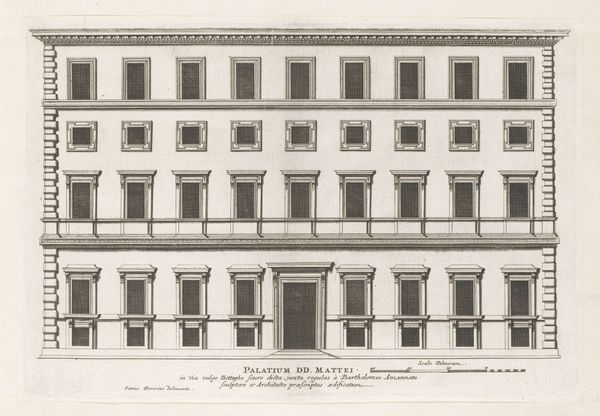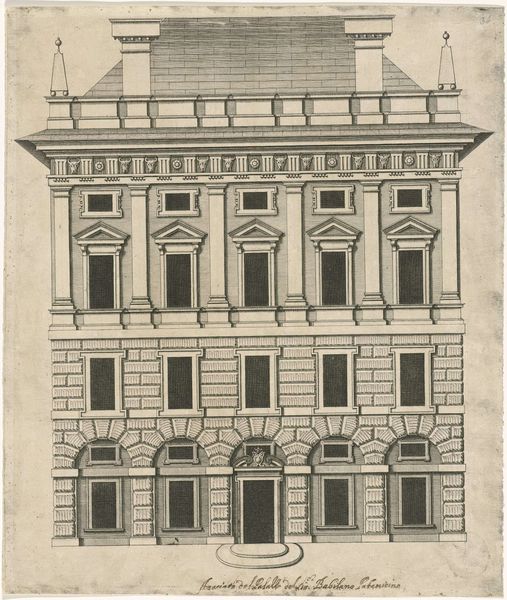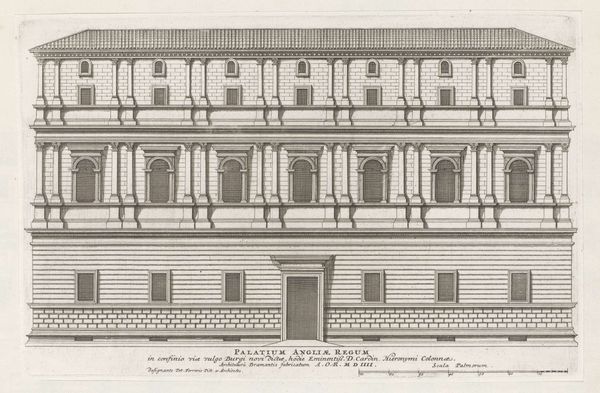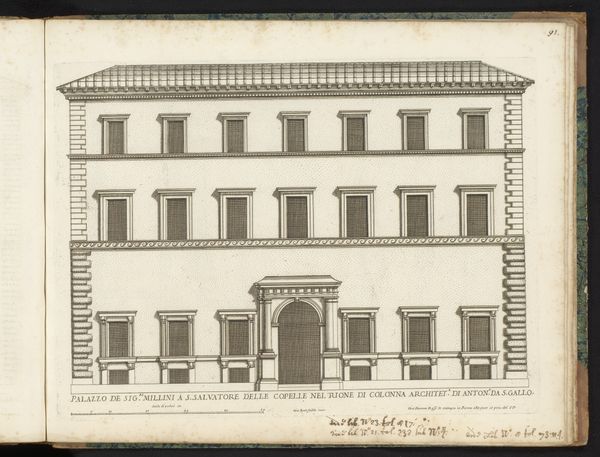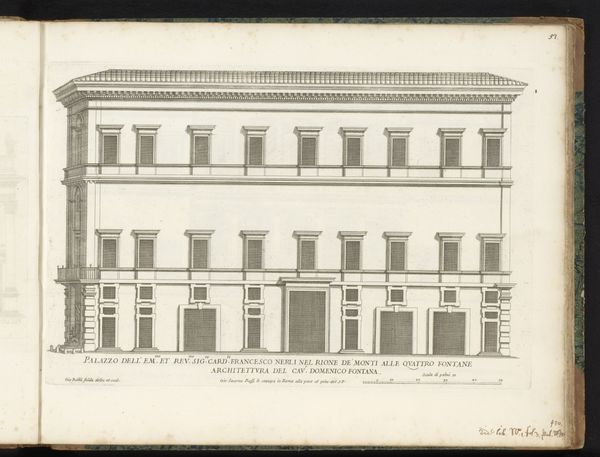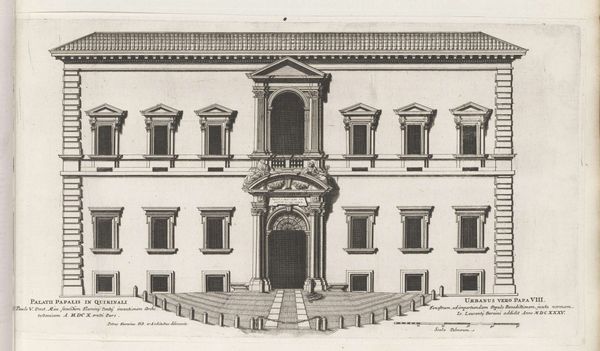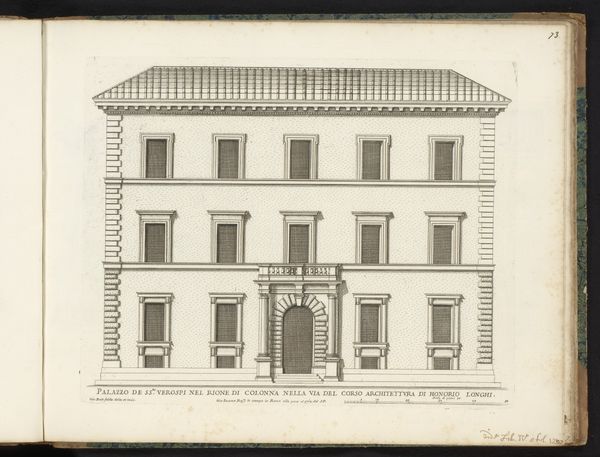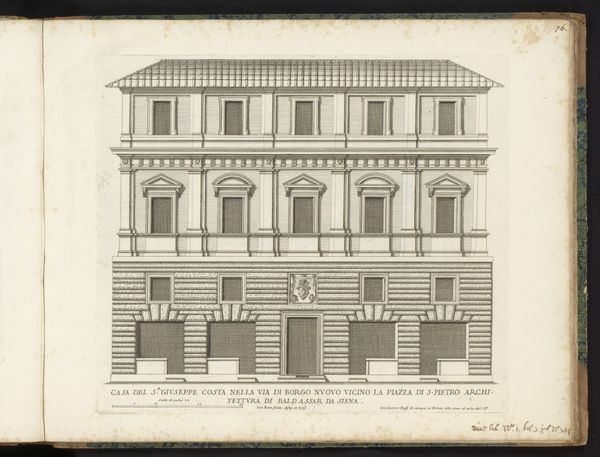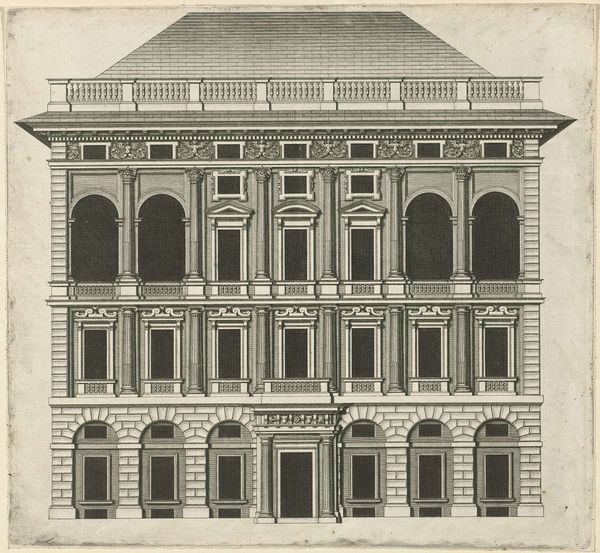
print, engraving, architecture
# print
#
geometric
#
line
#
cityscape
#
italian-renaissance
#
engraving
#
architecture
#
realism
Dimensions: height 245 mm, width 282 mm
Copyright: Rijks Museum: Open Domain
Curator: Giovanni Battista Falda created this print, "Facade van Palazzo Valentini te Rome," in 1655. It's an engraving that resides here at the Rijksmuseum. Editor: It's remarkable how much information Falda conveys using just line. The precision and clarity are quite striking. It feels very ordered, very… deliberate. Curator: That order reflects the social context. Engravings like these served as architectural records and promotional tools. Think about the labor involved: the careful drafting, the meticulous carving of the plate, the printing process itself. These prints made the architectural aspirations of wealthy patrons accessible. Editor: Indeed. The rigid geometry and careful arrangement speak to an aesthetic rooted in reason and control. Look at how the windows are uniformly spaced and how the cornice perfectly caps off the building. It all works to convey an image of stability. There's a harmony in its regularity, and this lends the palace a sense of serene dignity. Curator: Absolutely. But think about who commissioned the building, who benefited from this display of grandeur? Falda’s print wasn't simply documenting architecture; it was participating in a complex network of patronage and power. The print became a commodity in itself. The Palazzo’s façade becomes both an image, a marker of status, and also an article circulated among other elites of the age. Editor: I appreciate how you point out the context within which Falda was operating, and you're quite right that the work needs to be interpreted through all of these complex sets of signs. Considering all the lines together, one finds the visual embodiment of authority and established structures, translated via architectural blueprint into the language of art. Curator: Precisely! This print isn't just a picture. Editor: No, it is far more. Curator: Indeed. Thinking of all the work involved as well as the power reflected within this art changes how I see the palace, both in its design and its influence across society. Editor: Yes, and by understanding the interplay of structure, composition, and historical background, we get the full picture of the artwork.
Comments
No comments
Be the first to comment and join the conversation on the ultimate creative platform.


